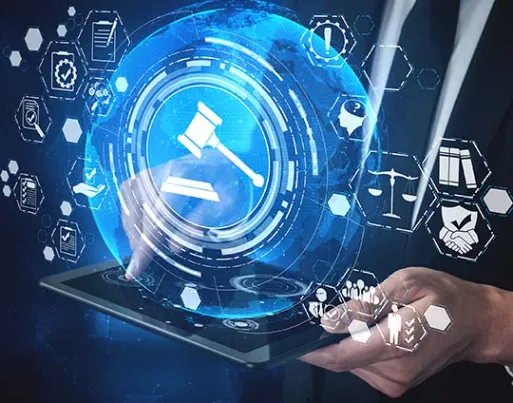eGovernance

The term "e-government" refers to the use of technology to
streamline government operations and the provision of products
and services. E-government makes extensive use of both online
and offline tools to help governments communicate and provide
services to their constituents. E-governance is a digital
interaction between government-to-citizen (G2C),
government-to-business (G2B), government-to-employee (G2E), and
government-to-government/agencies (G2G).
The efficient implementation of
eGovernance
initiatives can change how services are provided to citizens,
assisting national and state governments in effectively aligning
their services with the changing demands of both residents and
stakeholders as well as helping to build the economy. The
generation, storage, analysis, dissemination, and use of
information are the main components of an
eGovernance
system, which shortens service delivery cycles, boosts service
delivery effectiveness, and delivers accountability to all
stakeholders.

Our Solutions
The deployment of IT, ICTs, and other web-based communications
technologies to improve and/or increase the efficiency and
effectiveness of service delivery in the public sector. We have
been able to give ground-breaking solutions to governmental
institutions at diverse scales due to our expertise with them.
We have a wide range of expertise with government systems,
including health, municipal reforms, transportation, urban
development, utilities, and others.
Web-based Dashboard
For monitoring and integrating information for government,
citizens and businesses to access through the portals
which provide insights on Government programs and
services. It is made to be monitored in real time by the
head of state. With the use of support features and a site
map, this can range from basic and static information to
access to databases, documents, regulations, etc.
Interactive Interface
Facilitating interactive discussions between stakeholders
and providing them with proactive approaches to
problem-solving, electronic service requests, and
financial transactions. Designing and developing systems
to increase community access to these essential services
for common residents through a variety of channels, such
as online sections at government offices and one-stop
service kiosks, etc.
Transactional Presence
Internet access and completion of online transactions.
This interaction then leads to vertical and horizontal
integration, which alters how a service is provided. The
objective is to complete the service's transaction through
the internet while putting back-end integration in place.
Network Integration
Setting up a network of public agencies, process
certification and participation in basic process design
and political processes. The focal point here is
Integrated Portals. Important benchmarks at this level
include institutionalizing stakeholder participation
through the use of technologies like citizen polls and
encouraging political participation on the internet.
Contact Us
Looking for Info, or Tech?
Solve queries, get customized solutions, project details and
quotes, here:
